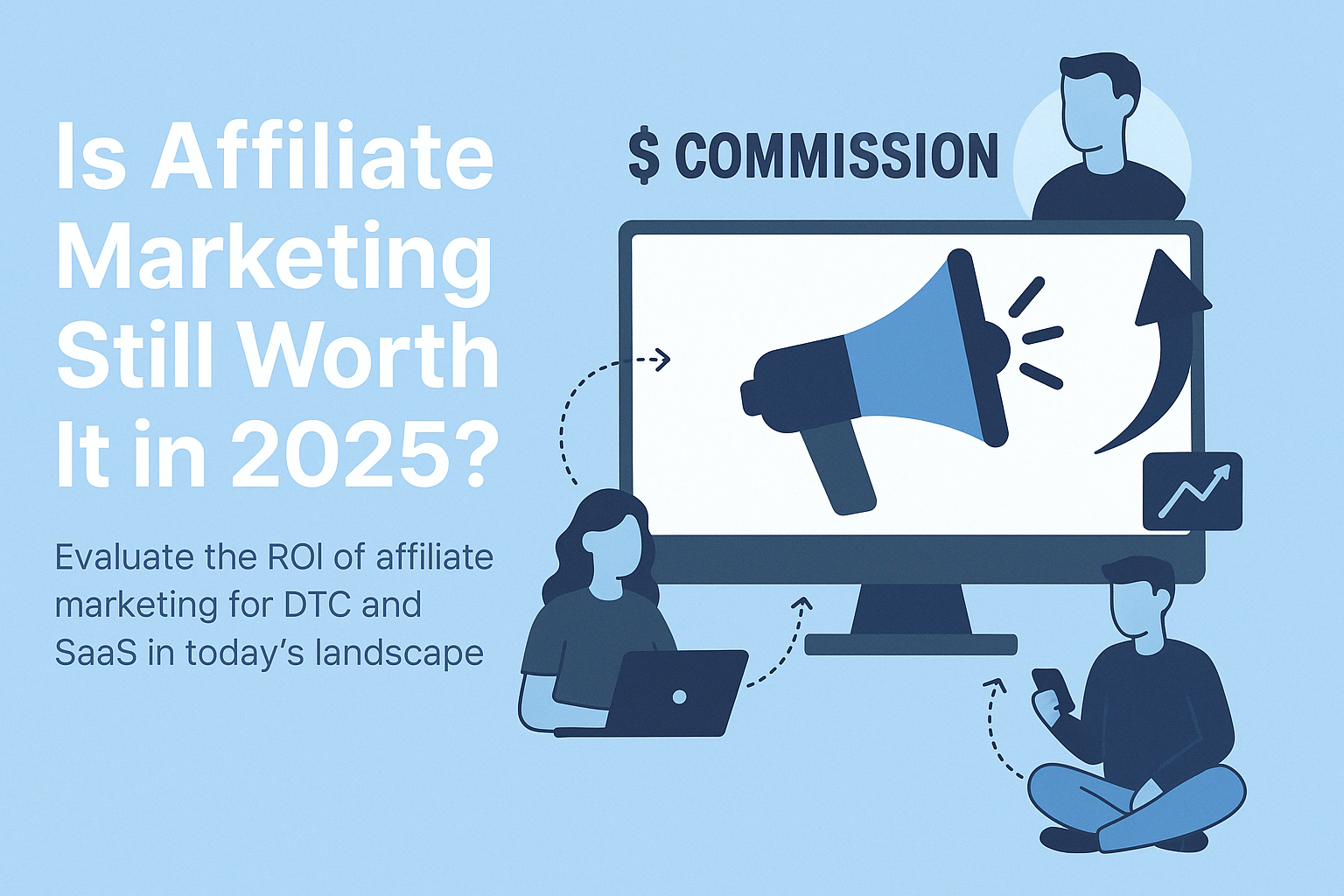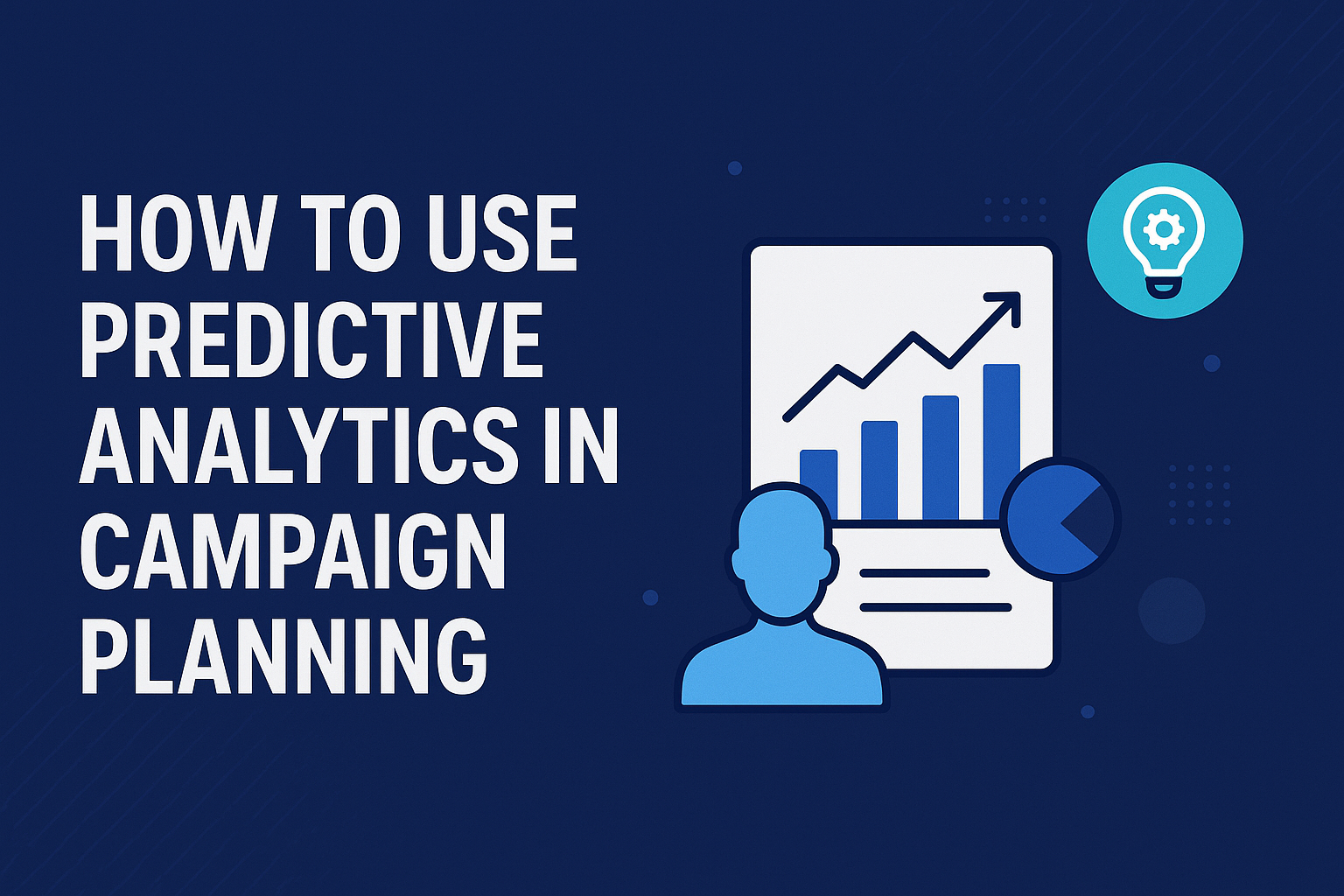
Affiliate marketing has been around since the early days of the internet, but its relevance and effectiveness have continued to evolve. In 2025, as brands face rising acquisition costs, evolving consumer privacy laws, and platform algorithm changes, the question arises: Is affiliate marketing still worth it?
The short answer: Yes but only if done right.
This article will guide you through the latest affiliate marketing trends, benefits, limitations, and execution strategies tailored for DTC brands, SaaS companies, and performance marketers.
Table of Contents
- What is Affiliate Marketing?
- Why Affiliate Marketing Still Matters in 2025
- Affiliate Marketing vs Influencer Marketing
- How Affiliate Marketing Works in 2025
- Types of Affiliate Programs
- Affiliate Marketing for DTC Brands
- Affiliate Marketing for SaaS
- Common Pitfalls to Avoid
- Future Trends in Affiliate Marketing
- Affiliate Tools and Platforms in 2025
- ROI: How to Measure Success
- FAQs
1. What is Affiliate Marketing?
Affiliate marketing is a performance-based marketing strategy where brands pay affiliates (publishers, influencers, bloggers) a commission for driving conversions — whether that’s clicks, leads, or sales.
Key Terms:
- Affiliate – Partner promoting your product.
- Merchant – Your brand or business.
- Commission – A payout model based on sales (CPS), leads (CPL), or clicks (CPC).
- Tracking – Affiliate links or codes used to track attribution.
2. Why Affiliate Marketing Still Matters in 2025
Here’s why affiliate marketing hasn’t just survived, but is thriving in 2025:
Cost-Efficient:
Brands only pay for performance, not impressions or reach. No upfront ad costs, unlike paid media.
Privacy-Friendly:
Post-iOS 14.5 and GDPR, tracking users through ads has become harder. Affiliates drive traffic directly through their content, sidestepping platform-level attribution issues.
High Trust:
Affiliate content is often native and trusted, especially when published by influencers, bloggers, or niche media outlets.
Scalable:
You can grow your program from 5 to 5,000 affiliates without increasing fixed costs.
3. Affiliate Marketing vs Influencer Marketing
While the two often overlap, they’re distinct:
| Metric | Affiliate Marketing | Influencer Marketing |
|---|---|---|
| Payment Model | Performance-based (CPS) | Flat fee or hybrid |
| Focus | Conversions/Sales | Reach/Awareness |
| Best For | Scalable ROI campaigns | Brand building |
| Tracking Method | Links/codes | View + engagement-based |
2025 Trend: Many influencers are now switching to affiliate-first models to monetize their followings better and provide proof of performance to brands.
4. How Affiliate Marketing Works in 2025
Here’s a simplified version of the current affiliate funnel:
- Brand joins or creates an affiliate program.
- Affiliates apply and receive unique tracking links or discount codes.
- Affiliates promote the product via YouTube, Instagram, blogs, etc.
- A user clicks or uses a code to buy → sale is tracked.
- Affiliate receives commission post-validation.
Modern tracking includes:
- First-party cookies
- Post-purchase survey attribution
- Coupon code matching
- API-based conversions
5. Types of Affiliate Programs
Revenue Share (CPS – Cost Per Sale)
Most common model affiliate earns a % per sale.
Flat Fee per Lead (CPL)
Useful for SaaS, subscriptions, and lead-gen funnels.
Tiered Commission
Incentivizes affiliates to sell more with escalating commissions.
Hybrid (Influencer + Affiliate)
Pay a base + performance bonus to top-tier creators.
6. Affiliate Marketing for DTC Brands
Direct-to-Consumer (DTC) brands love affiliate marketing because it:
- Drives sales without upfront spend
- Creates UGC (User Generated Content) at scale
- Leverages micro-influencers for niche reach
- Helps with SEO through backlinks from content partners
Best-performing content formats in 2025:
- Product comparison blogs
- YouTube tutorials
- TikTok reviews
- Listicles (“Top 10 Gifts”)
DTC Tip:
Offer exclusive discount codes to affiliates. They work exceptionally well on TikTok, IG Stories, and YouTube descriptions.
7. Affiliate Marketing for SaaS Companies
SaaS businesses benefit from recurring revenue and longer customer LTV.
This makes affiliate marketing a strong channel if structured correctly.
Popular SaaS affiliate models:
- 30% recurring commission for 12 months
- Lifetime commission for every referred customer
- Bonus + commission hybrid structure
Successful strategies:
- Partnering with industry bloggers, review sites, and YouTubers
- Webinars with affiliates for lead nurturing
- Integrations with platforms like PartnerStack or FirstPromoter
8. Common Pitfalls to Avoid
Neglecting Affiliate Vetting
Don’t auto-approve everyone. Poor affiliates can damage your brand.
Lack of Clear Guidelines
Affiliates need creative assets, CTAs, messaging frameworks, and branding rules. Ignoring Attribution Issues
Use multiple attribution methods (link + code + post-purchase survey) for accuracy.
Late Payouts
Paying on time builds loyalty. Delays damage trust and program reputation.
One-Size-Fits-All Commission
Reward high-performers with custom commission tiers or bonuses.
9. Future Trends in Affiliate Marketing
Influencers as Affiliates
Micro and nano-influencers are now demanding performance-based models. Expect more “affiliate-only” creators in 2025.
AI-Powered Matching
New affiliate platforms use AI to pair brands with top-fit affiliates based on niche, past performance, and audience overlap.
Live Shopping + Affiliate
TikTok Shop, Amazon Live, and Meta’s in-app shopping enable affiliate-powered commerce during livestreams.
Affiliate UGC Licensing
Brands are starting to license affiliate-generated content for use in ads, email, and website creatives — improving ROI beyond the affiliate sale.
10. Affiliate Tools and Platforms in 2025
Here are the top tools for managing affiliates in 2025:
| Tool | Best For | Features |
|---|---|---|
| Refersion | DTC brands | Shopify integration, payouts, UTM tracking |
| PartnerStack | SaaS programs | Tiered commission, analytics, CRM integration |
| Impact.com | Large-scale affiliate programs | Discovery marketplace, deep reporting |
| Tapfiliate | Simple startup programs | Easy setup, coupons, email templates |
| UpPromote | Influencer + affiliate mix | Ideal for TikTok & IG creators |
11. ROI: How to Measure Success
Affiliate marketing ROI should be judged not just by last-click sales, but also by:
- Customer LTV from affiliate-sourced users
- CAC (Customer Acquisition Cost) vs other channels
- Post-purchase survey attribution
- Cross-channel lift (e.g., email opt-ins, retargeting audience growth)
- Content repurposing potential
Example:
If an affiliate drives 100 customers at $40 CPA and each has an average LTV of $180, the ROI is significant compared to $90+ CPAs on Meta or Google.
12. FAQs About Affiliate Marketing in 2025
Q1: Is affiliate marketing still profitable in 2025?
Yes. If set up with the right partners, tracking, and incentives, affiliate marketing remains one of the highest ROI channels, especially for DTC and SaaS.
Q2: What commission rates should I offer?
It varies:
- Physical products: 10%–25% per sale
- SaaS tools: 20%–50% or recurring
- Digital products/courses: 30%–70%
Q3: Should I use an affiliate network or build in-house?
- Use a network (like ShareASale or Impact) for quick access to affiliates.
- Go in-house (using Refersion or PartnerStack) for more control, branding, and direct relationships.
Q4: How do I recruit affiliates?
- Outreach to existing customers and influencers
- Use discovery tools in affiliate platforms
- Promote on your website’s footer or thank-you page
- Offer first-month bonus incentives
Q5: What verticals benefit the most from affiliate marketing?
- Health & Wellness
- Fashion & Beauty
- B2B SaaS
- eLearning & Online Courses
- Home & Lifestyle
Should Your Brand Use Affiliate Marketing in 2025?
Affiliate marketing remains one of the most cost-efficient, trust-driven, and scalable strategies in the marketer’s toolkit. Whether you’re a fast-scaling DTC brand or a SaaS startup, building the right affiliate infrastructure today can pay off massively over the next 12 months.
Done correctly, affiliate marketing can:
- Reduce CAC
- Improve ROAS
- Build loyal customer communities
- Extend your brand’s organic reach
So, if you’re wondering whether your brand should invest in affiliate marketing in 2025 the answer is absolutely. Just be strategic, patient, and performance-focused.



